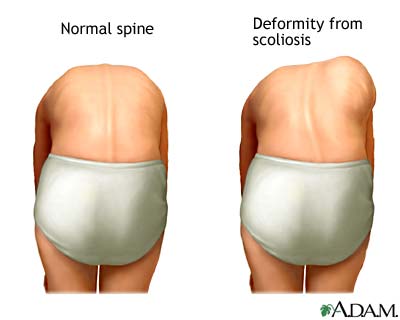Blog Categories
Search Blog
Blog Categories
Your Child and Scoliosis
What is Scoliosis?
Scoliosis is defined as a curvature of the spine that is greater than 10 degrees. It affects 2-3% of the general population, both in males and females; however, females are 8 times more likely to have a curvature that is significant enough to require treatment.
Can I Screen my Child For Scoliosis?
The answer is yes!
The Forward Bend Test (also called “Adam’s Test”) is something easy that parents can use to screen their child for scoliosis.
- Standing with the feet together, have your child bend forward as far as he/she can with their palms together, fingers pointing at their toes.
- Look at the back; one side (either upper or lower back region) will be higher than the other, almost appearing like a bulge
Physician Screening for Scoliosis
It is also important to have your child’s spine carefully examined by a Pediatrician/Family Doctor and a Physiotherapist who has experience treating scoliosis.
If asymmetries are noted, x-rays are then taken to determine the severity of the curve.
- Small Curve: between 10-30 degrees
- Medium Curve: between 30-50 degrees
- Large Curve: greater than 50 degrees
At What Age Should My Child be Screened?
- Girls: screened twice at 10 and 12 years of age
- Boys: screened at 13 or 14 years of age
What are my Treatment Options?
Treatment options will vary depending on the severity of the curve. Below are the general guidelines:
- Curves < 20 degrees: no bracing is required. Conservative therapy, such as physiotherapy, may be recommended to improve postural alignment and improve muscular asymmetries.
- Curves 20-50 degrees: bracing is recommended as long as the child is not skeletally mature (this can be determined via x-ray results). Bracing will help prevent any further progression of the curve, but will not improve the current curve.
- Curves > 50 degrees: surgical consultation is often considered.
What is the Role of Physiotherapy and Scoliosis?
Physiotherapy can help identify and treat muscle imbalances and postural issues in this population. A specific exercise program can be developed to maximize core strength, increase flexibility, and improve postural alignment. It is also very important to note that there is no evidence that supports exercise in substitution of bracing, nor is there any evidence to support that physiotherapy can decrease or slow the progression of the curvature of the spine.
The most effective approach in managing scoliosis is an early identification of the issues and a team approach to minimizing the progression of the curvature.
If you think that your child may have scoliosis, book an appointment with your Family Doctor and Physiotherapist as soon as possible.








